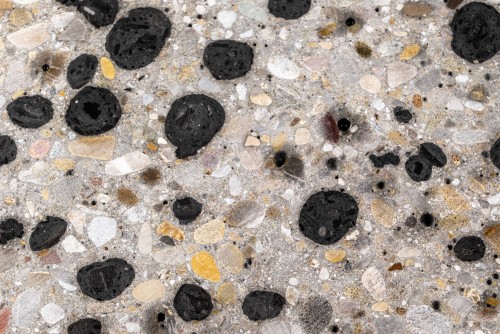Swiss researchers have proposed an ambitious solution to one of climate change’s most pressing challenges: storing the massive amount of carbon that needs to be removed from our atmosphere. Their answer lies in an unexpected place — the concrete beneath our feet.
Scientists at Empa, the Swiss Federal Laboratories for Materials Science and Technology, have calculated that by transforming captured carbon dioxide into building materials, particularly concrete aggregates, we could potentially remove all excess atmospheric carbon by the end of this century.
“These calculations are based on the assumption that sufficient renewable energy will be available after 2050 to remove CO₂ from the atmosphere – a very energy-intensive endeavor,” explains Pietro Lura, Head of Empa’s Concrete and Asphalt laboratory. “This assumption allows us to use different scenarios to analyze how realistic and efficient the concept of our Mining the Atmosphere initiative is.”
The Scale of the Challenge
The numbers are staggering. To return atmospheric CO₂ levels to their 1988 concentration of 350 parts per million – considered the safe threshold by climate scientists – approximately 400 billion tons of carbon must be removed from the atmosphere. That’s equivalent to about 1,500 billion tons of CO₂.
Current approaches to carbon capture and storage often focus on underground injection, but this method faces significant challenges including potential leakage risks and limited suitable locations. The Empa team’s proposal offers a different path: transforming captured CO₂ into solid materials that could be used in construction.
From Air to Concrete: A New Carbon Cycle
The process would begin with using renewable energy to capture CO₂ from the air and convert it into basic chemicals like methane or methanol. These would then be transformed into solid carbon materials that could be incorporated into concrete as aggregates – the sand and gravel components that make up about 70% of concrete’s volume.
The researchers have identified two promising approaches. The first involves creating porous carbon aggregates that could replace up to 10% of conventional concrete materials. The second, more ambitious option would use silicon carbide (SiC), a extremely hard material containing 30% carbon by mass, which could potentially replace all traditional aggregates in concrete.
Timeline to Carbon Neutrality
According to the team’s calculations, if implemented at scale after 2050, this approach could bind about 10 gigatons of carbon annually. Under the most optimistic scenario, using primarily silicon carbide aggregates, the excess atmospheric carbon could be removed within about 50 years.
“Silicon carbide offers enormous advantages, as it binds carbon practically forever and has excellent mechanical properties,” Lura notes. “However, its production is extremely energy-intensive and represents one of the greatest challenges, both in terms of cost-effectiveness and sustainable implementation.”
Economic Opportunities
Unlike traditional carbon capture and storage, which represents purely a cost, this approach could generate economic value. The captured carbon could be used to produce various high-value materials, from polymers to carbon fibers and nanotubes, potentially helping to offset the costs of carbon removal.
The proposal also addresses another growing challenge: the global shortage of natural sand suitable for concrete production. By creating synthetic aggregates from captured carbon, the construction industry could reduce its dependence on natural resources while helping to address climate change.
Challenges Ahead
The researchers acknowledge significant hurdles remain. The entire concept depends on having abundant renewable energy available after 2050. Additionally, substantial advances in materials science and engineering will be needed to develop processes that can effectively use intermittent renewable energy to produce these carbon-based materials.
The team emphasizes that this approach should be viewed as one component of a broader strategy to address climate change. “Nevertheless, the aim should be to remove as much CO₂ as possible from the atmosphere each year in order to achieve 350 ppm CO₂ in a realistic timeframe together with other measures,” says Lura. “At the same time, it is crucial to continuously minimize our emissions so that the recovery process is not in vain.”
The research has been published in the journal Resources, Conservation and Recycling.
If you found this piece useful, please consider supporting our work with a small, one-time or monthly donation. Your contribution enables us to continue bringing you accurate, thought-provoking science and medical news that you can trust. Independent reporting takes time, effort, and resources, and your support makes it possible for us to keep exploring the stories that matter to you. Together, we can ensure that important discoveries and developments reach the people who need them most.























































